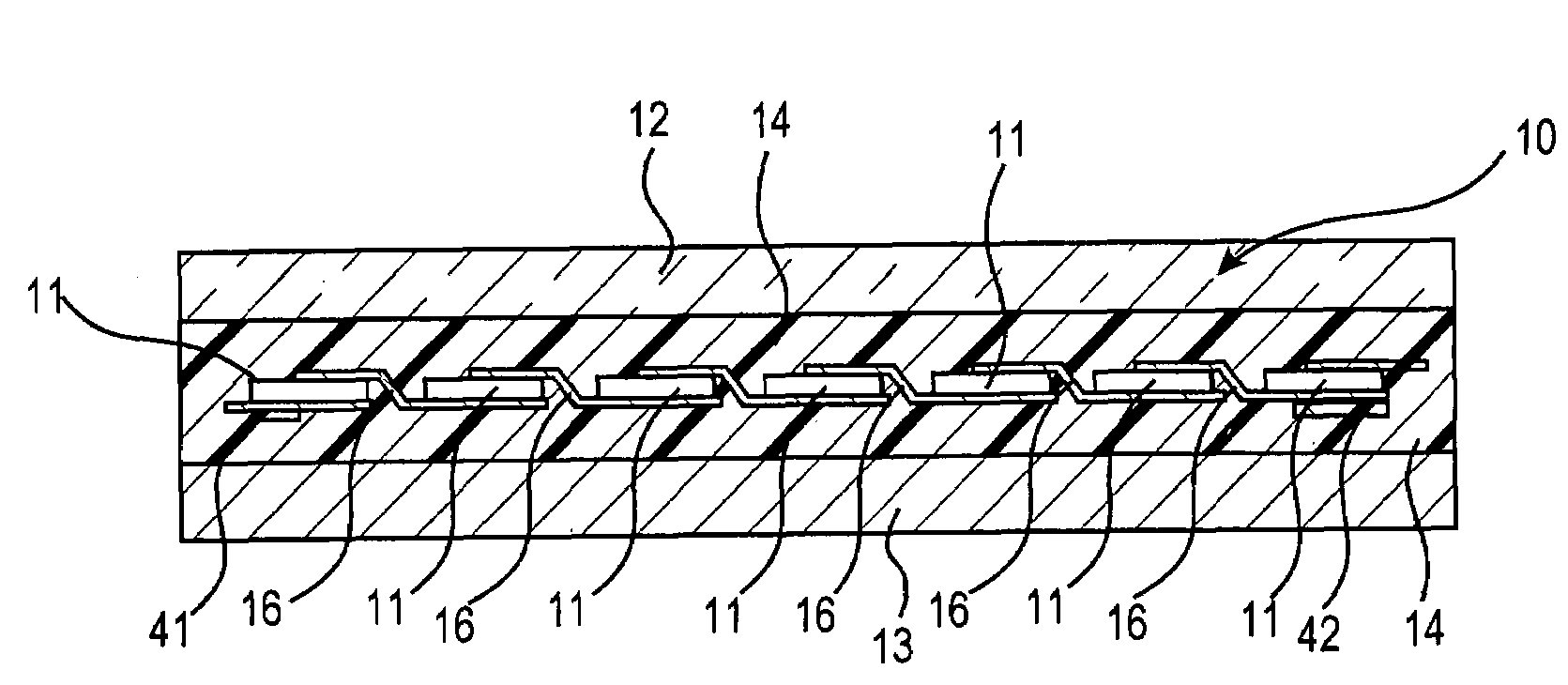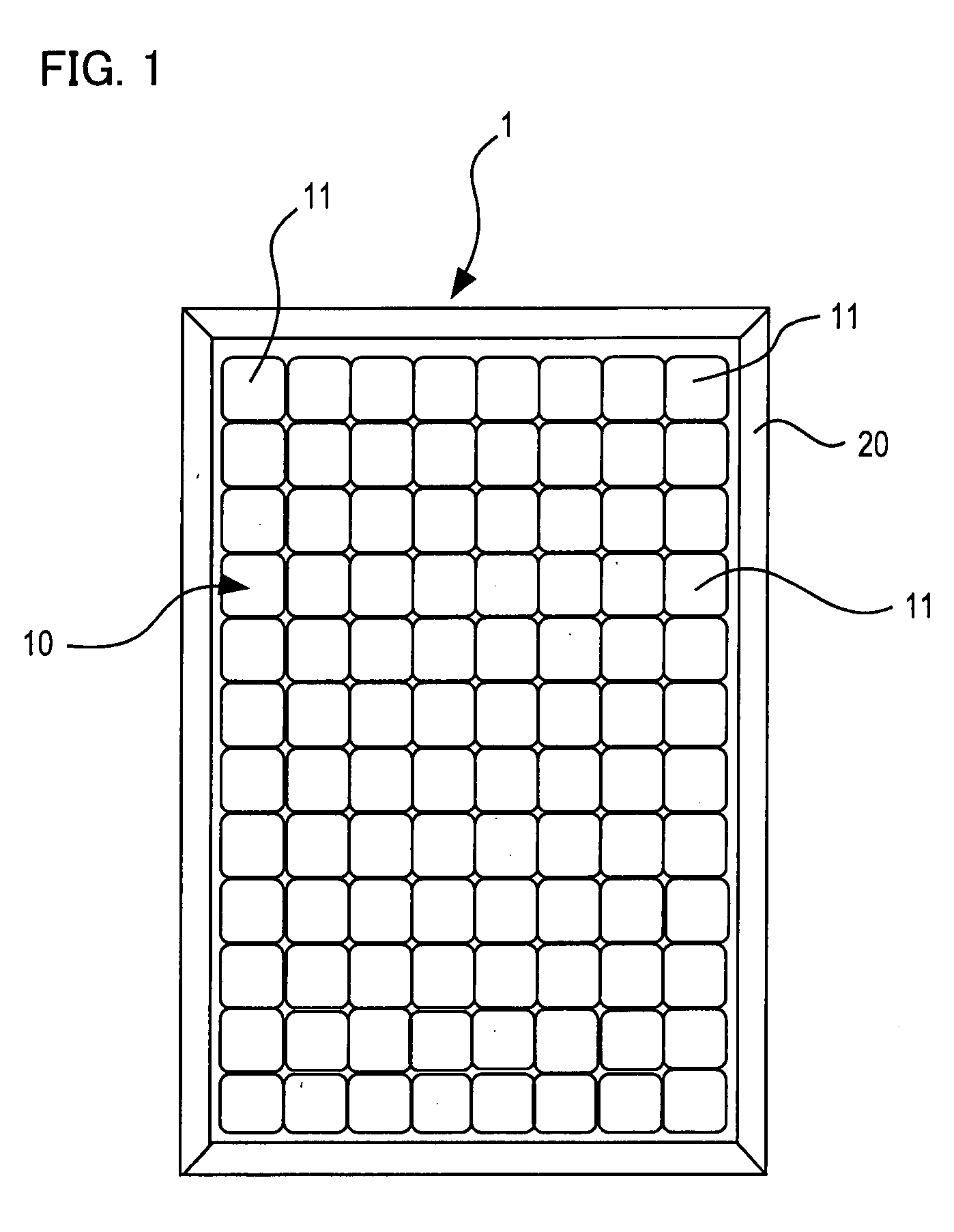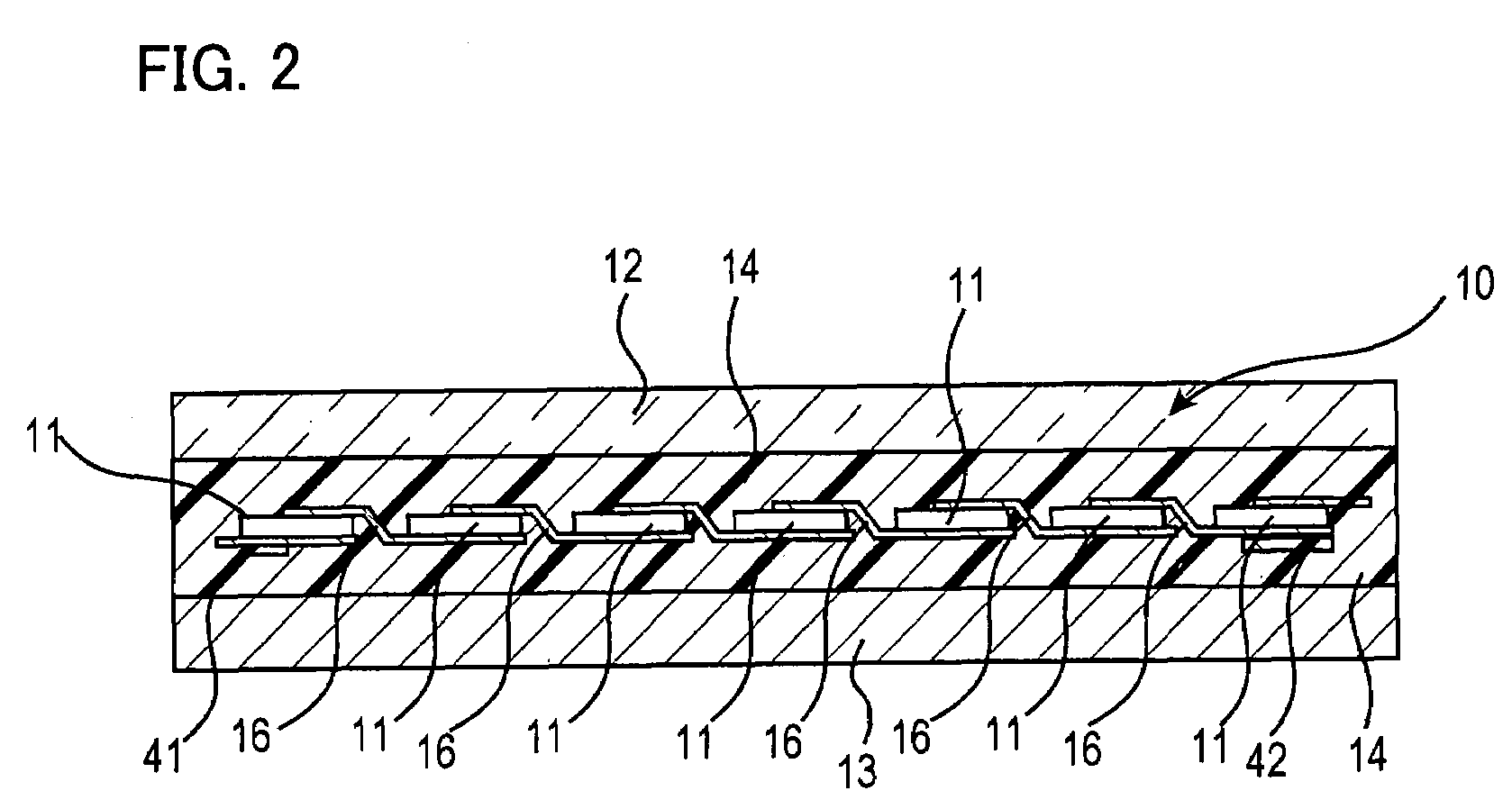Photovoltaic module
a photovoltaic module and photovoltaic technology, applied in the direction of pv power plants, light radiation electric generators, generators/motors, etc., can solve the problems of reducing the efficiency of the module, reducing the yield of the manufacturing process, and generating air bubbles, so as to reduce the area occupied, prevent the generation of air bubbles, and improve the module efficiency
- Summary
- Abstract
- Description
- Claims
- Application Information
AI Technical Summary
Benefits of technology
Problems solved by technology
Method used
Image
Examples
first embodiment
[0062]In the first embodiment as illustrated in FIG. 4, twelve solar cells 11 (the solar cells positioned in between are not shown in the figure) are connected in series through the tab connectors 16 so as to form a unit (strings 40). In the embodiment, eight such strings 40 are connected in series. In the photovoltaic module 1, the solar cells 11 are arranged in twelve series and in eight lines. This invention is also applicable, even though the number of series is increased or reduced, which means that the number of the solar cell 11 of the strings 40 is increased or reduced.
[0063]In the embodiment, the strings 40 are arranged so that p-type amorphous silicon layer 113 side of the solar cell 11 faces light-receiving surface side and the adjacent solar cells 11, 11 are interconnected through the tab connectors 16. The tab connector 16 has one end connected to collector electrode on a upper surface side of a given solar cell 11 and the other end connected to collector electrode on a...
second embodiment
[0089]FIGS. 7 and 8 are schematic cross-sectional views of the photovoltaic module according to the present invention illustrating each strings connected through the interconnectors.
[0090]In FIGS. 7 and 8, solar cells 11a, 11b have same basic structure as that shown in FIG. 3. For example, the solar cell 11a is a cell used for arranging so that the p-type amorphous silicon layer 113 side faces to the light-receiving side, and the solar cell 11b is a cell used for arranging so that the n-type amorphous silicon layer 119 side faces to the light-receiving side.
[0091]The each solar cells 11a, 11b with such arrangement have predetermined a film thickness, a film material, and the like for optimal conversion efficiency.
[0092]As illustrated in FIGS. 7 and 8, the solar cells 11a and the solar cells 11b can be connected in series by alternately arranging the solar cells 11a and the solar cells 11b and connecting with each collector electrodes through tab connectors 16a, 16b. The negative ele...
third embodiment
[0096]In the aforementioned embodiment shown in FIG. 4, since the copper foil of the lead-out wire 42a, 43a of the interconnector 42, 43 are thin and formed, there is undeniably an increased resistance. While, in the third embodiment shown in FIG. 11, the leading-out part of the interconnector 42 connecting to the negative electrode and the positive electrode is remained wide so as to lead out to the terminal box 30.
[0097]In the third embodiment shown in FIG. 11, the interconnector 41 has an increased width and the connection 44b connecting with the tab connector of the interconnector 44 has an increased width. Therefore, the interconnectors 41, 44 and the interconnectors 42, 43 are partially and slightly protruded outside the solar cell 11. Then, the terminal box 30 is made large in a vertical direction, and a position where the lead-out wire connecting to the terminal box is inserted is moved to the upper edge side. Such structure can prevent the resistance increase. Although the ...
PUM
 Login to View More
Login to View More Abstract
Description
Claims
Application Information
 Login to View More
Login to View More - R&D
- Intellectual Property
- Life Sciences
- Materials
- Tech Scout
- Unparalleled Data Quality
- Higher Quality Content
- 60% Fewer Hallucinations
Browse by: Latest US Patents, China's latest patents, Technical Efficacy Thesaurus, Application Domain, Technology Topic, Popular Technical Reports.
© 2025 PatSnap. All rights reserved.Legal|Privacy policy|Modern Slavery Act Transparency Statement|Sitemap|About US| Contact US: help@patsnap.com



